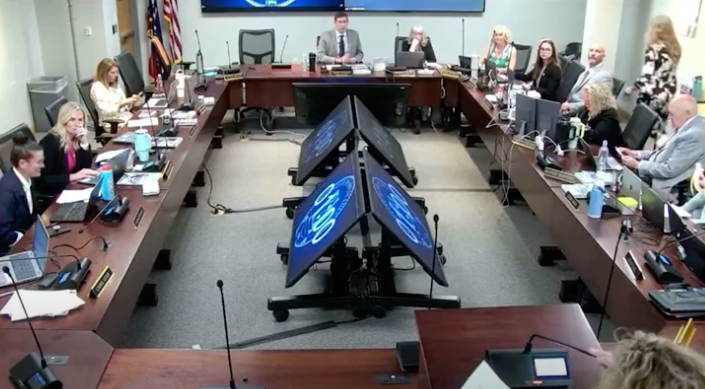

Salt Lake City, UT - June 9, 2025
Last week, the Utah State Board of Education voted to open a 90-day public comment period on a proposed overhaul of the state’s K–12 math standards. The decision follows months of increasing momentum for reform—and reflects concerns raised by Utah’s tech and business communities over the future of math education.
In 2021, TechBuzz surveyed its readers on the state of K–12 math instruction in Utah. The responses were clear: students and employers alike are frustrated with a system that feels outdated, overly theoretical, and disconnected from real-world applications. Respondents emphasized the need for more practical, relevant math instruction—especially around data literacy and problem solving.
The proposed standards are informed by national and international research and aim to better equip students with the full spectrum of mathematical proficiency—procedural fluency, conceptual understanding, problem solving, and, critically, a “productive disposition.” That final piece—students believing math is relevant to their lives—is what Utah’s new standards aim to unlock.
“These updates reflect a thoughtful vision of the mathematics that students need to understand in order to succeed in postsecondary opportunities,” said Lindsey Henderson, Math Policy Director at ExcelinEd and former Secondary Math Specialist for the Utah State Board of Education, in her public address to the Board on June 5, 2025.

Henderson emphasized that the standards are not just cosmetic revisions. They incorporate a growing body of research showing that students learn—and retain—mathematics more effectively when it is presented in real-world contexts. “By offering high-quality, relevant pathways with clear connections to careers and postsecondary opportunities, Utah’s proposed math standards are empowering students and families with the tools to make informed decisions about their futures,” she said.
The proposed updates embed data science throughout the K–10 curriculum and offer students multiple high school pathways in 11th grade—tailored to future careers in STEM, technical trades, business, or data analytics. These choices, Henderson noted, align with psychological research showing students are more likely to persist through challenges and engage deeply when they see math as meaningful and applicable to their lives.
Other states are taking notice. Maryland is in the process of adopting Utah’s model, which it has had in place for more than a decade.

The public will now have access to two documents for review and feedback:
- A comprehensive PK–12 Math Standards draft, developed by a committee of 50 Utah math experts over the past 18 months. It introduces a stronger focus on data science beginning in pre-kindergarten and continuing through high school, while maintaining Utah’s integrated math structure.
- A six-page summary of recommendations from the elected State Board of Education, outlining specific policy adjustments and seeking public input.
Together, the documents propose a reimagining of how Utah students experience math—from foundational arithmetic to applied analytics.
Data Science as a Core Skill
A centerpiece of the proposed changes is the integration of data science concepts throughout the curriculum. Rather than teaching data as a separate or optional track, the new standards embed it early and build on it through the grades. By 11th grade, students can choose from multiple pathways—including a dedicated data science course tailored for those pursuing careers in analytics, business, health, or tech.
“Building these competencies, starting in pre-kindergarten and extending through high school… recognizes the fact that not every student needs the same math,” said Henderson. “By offering high-quality, relevant pathways with clear connections to careers and postsecondary opportunities, Utah’s proposed math standards are empowering students and families with the tools to make informed decisions about their future.”
Integrated Math Stays in Place
While the content of the standards is shifting, the structure is not. Utah will continue its integrated approach to high school math, where students learn algebra, geometry, and data simultaneously rather than in isolated courses.
According to Henderson, that continuity is a strength—not a compromise. “The top performing countries on the international PISA math exam all require an integrated math experience through 10th or 11th grades,” she told the board. “Students who studied integrated mathematics are significantly advantaged over those who studied subject-specific math.”
Utah has used integrated math for more than a decade, and states like Maryland are now attempting to replicate its model. See additional research about other states' responses to math curriculum revisions.
From Content to Opportunity
For Utah’s fast-growing tech and startup sectors, these changes carry long-term significance. They offer the potential for a workforce better equipped with data reasoning, analytical thinking, and real-world problem-solving skills—traits in high demand and short supply.
“The proposed revisions are not just about updating content,” Henderson said. “They’re about expanding economic opportunity for Utah’s future.”
What’s Next
The public comment period runs for 90 days. Business leaders, educators, parents, and students are all encouraged to review the draft standards and submit feedback to the Utah State Board of Education.
See the proposed Utah P-12 core math standards revision here.
To view last week's commentary leading up to the decision to open up a 90 day public comment period, see State Board of Education June 5th Meeting.
See also, the University of Chicago study on Utah's math curriculum.
The State Board of Education's solicitation of public feedback on mathematics standards revisions is expected to be available on its Linked In, Facebook, X sites and via its elementary mathematics newsletter. Or, contact members of its math team here.

